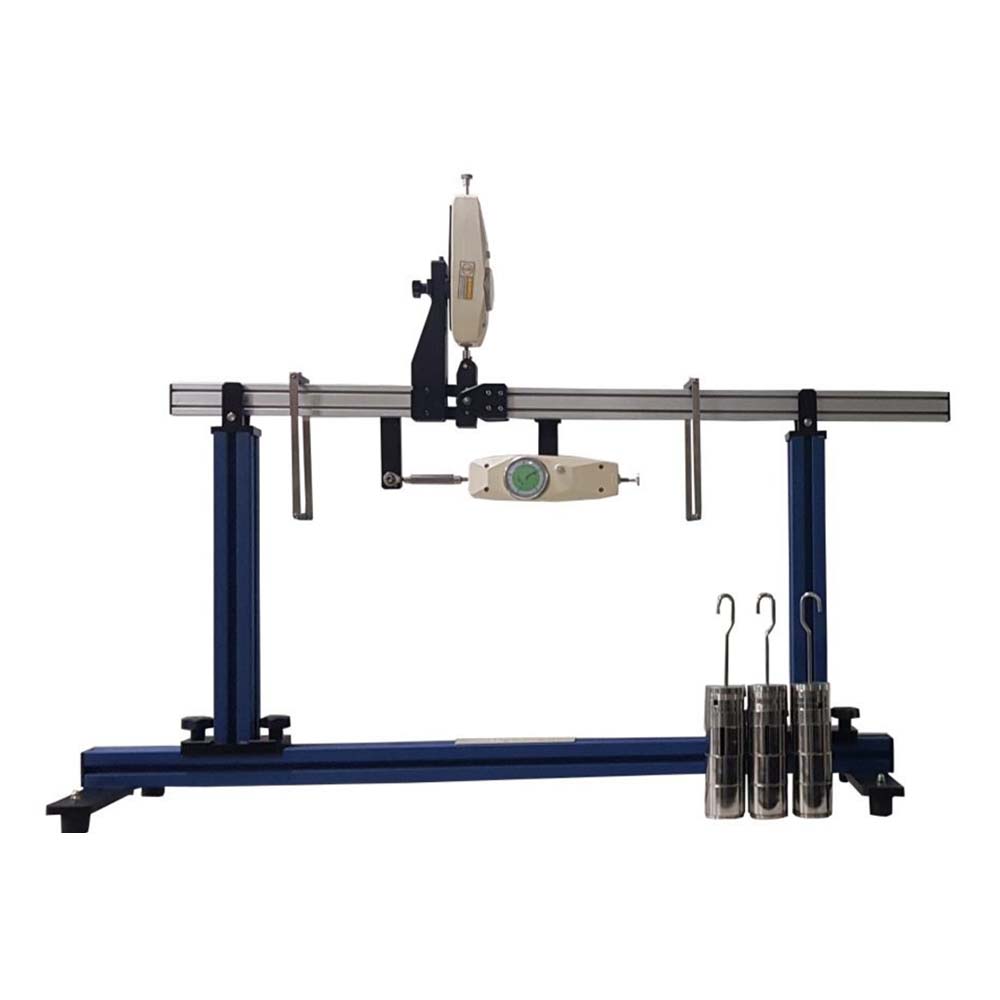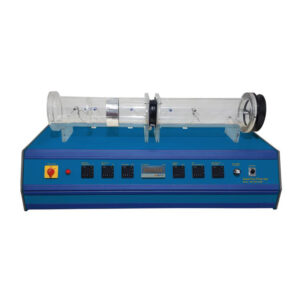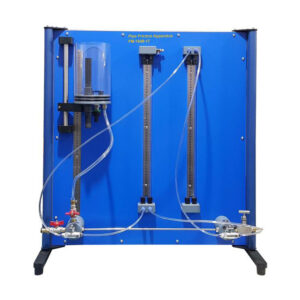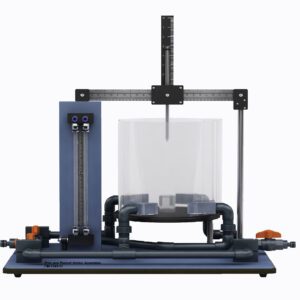Static examines how forces act on a rigid body while ignoring any potential deformations that might take place throughout the process. In balance are the forces. In actuality, every force has an impact on the component, like deformation. In the study of material strength, these impacts are looked into. The techniques used to increase material strength are used to create components that cannot be damaged or distorted by applied forces. The equilibrium conditions are used to determine the reactions. It is theoretically divided into two segments in order to examine the impact of the point loads in the beam. Applying the method of sections, the internal forces and moments are calculated using the equilibrium conditions and displayed onto the two segments. The device has a beam that is supported by two support. One end of the beam is cut. A low-friction hinge with two degrees of freedom is present at this position. The internal responses to the externally applied forces at the section are measured by two force gauges. A force gauge immediately measures and displays the shear force. A second force gauge working on a fixed lever arm
records the bending moment that occurs at the section. The two force gauges’ adjuster nuts are used to balance off any deflection and position the beam horizontally. The experiment’s evaluation reveals that shear force, as opposed to bending moment, is largely insignificant when designing components.
Experiments:
- Calculation of the reactions arising from the static conditions of equilibrium.
- Application of the method of sections to calculate the internal moments.
*Under a point load.
*Under multiple point loads. - Calculation of the shear force diagram.
- Calculation of the bending moment diagram.
- Comparison of calculated and measured values for shear force and bending moment.
Specifications:
- Determination of shear force and bending moment on beam mounted on 2 supports.
- Measurement of shear force and bending moment in beam by low-friction hinge with 2 degrees of freedom.
- Position of hinge at 1/3 span.
- 2 bearing supports.
- Loading of beam by 1 to 3 point loads.
- Force gauges to indicate shear force and determine bending moment.
- Bending moment determined by force measurement and lever arm.
- Adjuster nuts for horizontal alignment of beam.
- Steel rule to determine positions of point loads.




